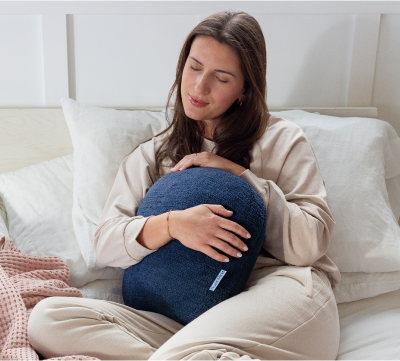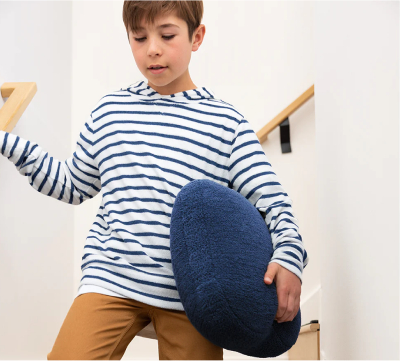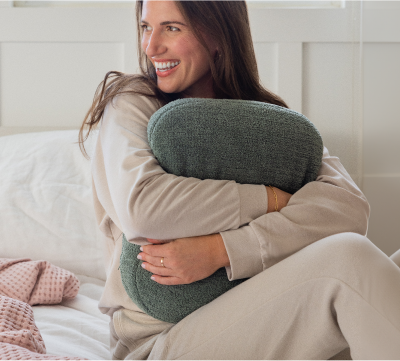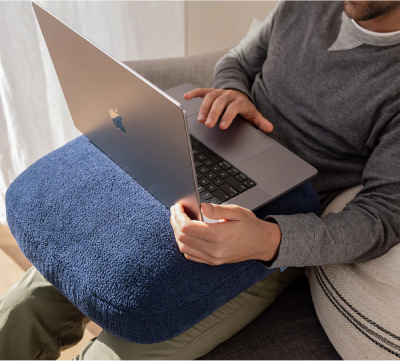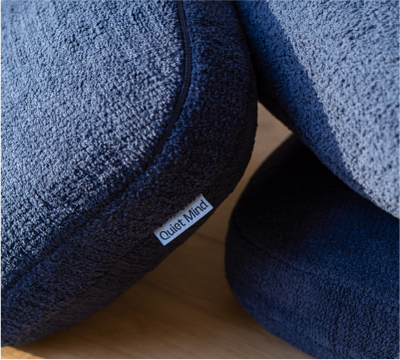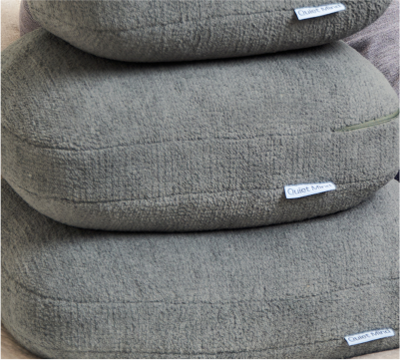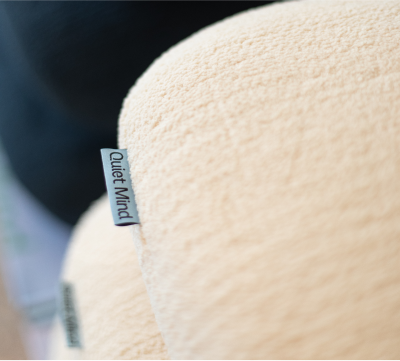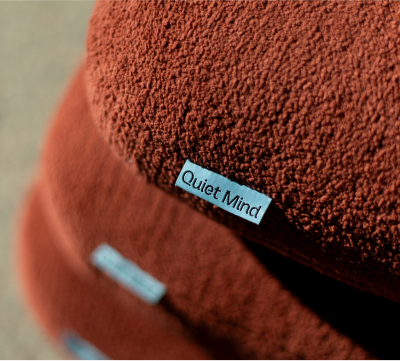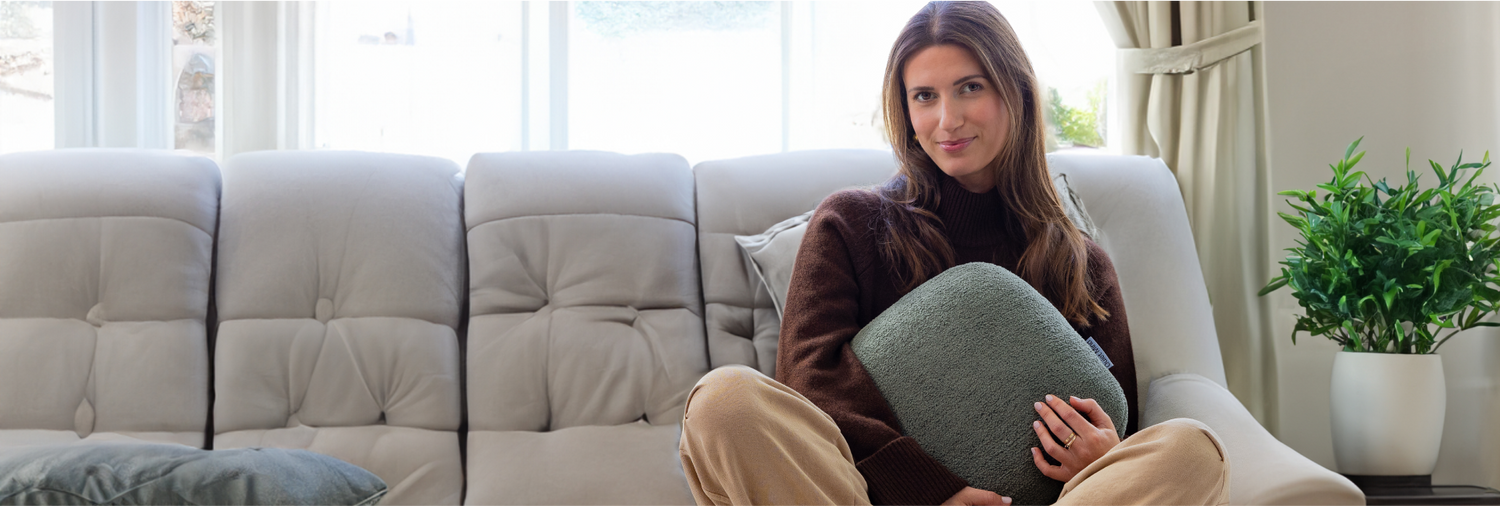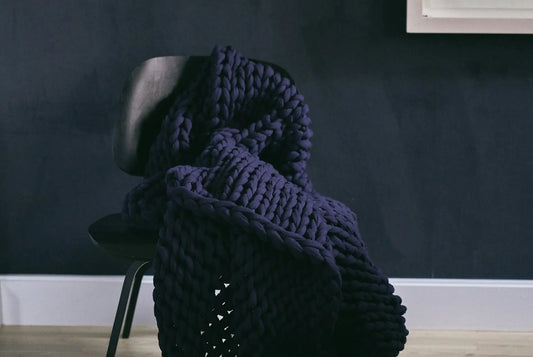Sleeping on your back sounds simple, but for many people, it just doesn’t feel right. Whether it’s back pain, snoring, or the wrong mattress, back sleeping can be more challenging than expected. Fortunately, small adjustments can help. With the right setup and a bit of patience, you may find back sleeping becomes more comfortable over time.
This guide explores why back sleeping feels unnatural to some people and offers practical, body-aware solutions for making the switch—if it's the right fit for you.
Key Takeaways
- Discomfort from tight muscles, poor posture, or mattress support can make back sleeping difficult.
- Snoring, anxiety, or breathing issues may cause you to avoid lying flat.
- Adjusting your pillow or adding knee support can improve alignment and comfort.
- Getting used to back sleeping often takes time and habit retraining.
- It’s okay if back sleeping isn’t right for you—comfort and sleep quality matter most.
Is Sleeping on Your Back Really the “Best” Position?
Back sleeping has its benefits, but it isn’t automatically the best choice for everyone. Your ideal position for better sleep depends on your body, comfort preferences, and any underlying health conditions.
Benefits of Back Sleeping
Back sleeping has many benefits. Here's why some prefer it:
- Spinal alignment: Back sleeping with a supportive mattress and a pillow under your knees helps keep the spine neutral.
- Fewer facial wrinkles: Since your face isn’t pressed against a pillow, there’s less friction and pressure on the skin.
Potential Downsides
- Snoring and sleep apnea: Lying on your back can cause the tongue and soft tissues to fall backward, narrowing airways.
- Discomfort or stiffness: Without proper support, the lower back or neck may feel strained.
- Sleep paralysis (in rare cases): Some people are more prone to episodes of sleep paralysis when lying flat.
Ultimately, the best sleep position is one that supports your body and helps you wake feeling rested. How you sleep is personal. If you prefer lying on your back, a few small tweaks—like adding a pillow or exploring side sleeping might help you feel more comfortable and rested.
Why Back Sleeping Might Feel Uncomfortable
Back sleeping doesn’t come naturally to everyone, and physical discomfort is often the reason. Common culprits include tight muscles, poor mattress support, and body imbalances. If you wake up with aches or struggle to stay on your back, these factors could be why.
Tight Muscles and Poor Posture
Spending long hours sitting—especially with bad posture—can lead to tight hip flexors, hamstrings, and lower back muscles. This stiffness can make it uncomfortable to lie flat.
Unsupportive Mattress
A mattress that’s too soft lets your hips sink, throwing your spine out of alignment. Too firm, and it might create pressure points on your lower back or shoulders. Either way, your body struggles to relax in a neutral position.
Body Imbalance and Habitual Sleeping Positions
If you’ve spent years sleeping on your side or stomach, your body is used to that posture. Switching to back sleeping can feel unnatural at first. In some cases, underlying imbalances—like scoliosis or a tilted pelvis—can make it harder to find a comfortable back-sleeping position.
Other Health Considerations
Conditions like sciatica, herniated discs, or even acid reflux can cause discomfort when lying on your back. It’s worth exploring these issues with a professional if back sleeping consistently causes pain.
How to Know If Your Pillow or Mattress Is the Issue
Your mattress and pillow directly affect your comfort in any position. Here’s how to spot issues:
|
Symptom |
Possible Cause |
Fix |
|
Neck pain |
Pillow too high or low |
Use a contour or adjustable pillow |
|
Lower back discomfort |
Mattress too soft or unsupportive |
Try a medium-firm or firmer mattress |
|
Restlessness |
Poor spinal alignment |
Add a pillow under the knees |
Tip: When testing, lie on your back without a pillow. If your spine feels strained or hips sink, your mattress likely needs upgrading.
Why Can't I Sleep On My Back? Possible Reasons
Back sleeping can be tough if you have anxiety or breathing problems. Even if your body wants the alignment benefits, emotional or physical issues can make it hard. Knowing these obstacles helps you find a way to sleep that suits you.
Feeling Anxious or Vulnerable on Your Back
Some people feel exposed or anxious when lying flat. This discomfort may be rooted in past sleep struggles, body pain, or simply feeling out of control.
Solutions:
- Place a pillow under your knees to reduce tension
- Add a pillow beside you for a sense of grounding
- Practice back sleeping during naps or wind-down time, without pressure to fall asleep immediately
Weighted blankets or pillows can also help. The gentle, even pressure they provide activates the parasympathetic nervous system, which lowers heart rate, reduces cortisol levels, and promotes a sense of calm—helpful for those who feel vulnerable in back-sleeping positions.
Breathing Trouble, Snoring, and Nasal Congestion
Back sleeping can worsen snoring or breathing difficulties due to airway collapse.
Solutions:
- Elevate your head with a supportive pillow or wedge
- Address allergies or nasal congestion before bed
- Try side sleeping if symptoms persist
How to Train Yourself to Sleep on Your Back
Switching positions takes consistency and patience. But small changes can make a big difference. Start with these tips and tricks to sleep comfortably on your back.
Start Small and Build Comfort
- Lie on your back for 15–30 minutes during wind-down
- Use props like a body pillow to keep you in place
- Add a weighted pillow across your lap or under your arms to encourage stillness
Use Supportive Tools
|
Tool |
Purpose |
Benefit |
|
Memory foam pillow |
Supports neck and head |
Reduces strain and maintains alignment |
|
Body pillow |
Prevents rolling |
Encourages new sleep habits |
|
Knee pillow/wedge |
Lifts hips or knees |
Eases lower back tension |
|
Weighted pillow |
Grounds upper body |
Helps reduce restlessness and anxiety |
When to Stop Forcing It
If back sleeping continues to feel wrong despite changes, it may simply not suit your body.
Stick With What Works
- Side sleeping often supports digestion, pregnancy, and comfort
- Stomach sleeping may feel better for some with chronic snoring
- Prioritize sleep quality over position perfection
Your goal is restorative sleep—not ideal alignment for its own sake. Listen to your body.
Sleeping On Your Back: The Bottom Line
Back sleeping offers clear benefits, but it isn’t for everyone. If it feels uncomfortable or disruptive, don’t force it. A few simple tweaks may help you ease into it, but the best sleep position is the one that helps you feel your best.
And if you're looking for calming tools to support your wind-down routine, Quiet Mind’s weighted pillows are designed to encourage stillness and comfort in any sleep position—without adding tension or bulk.
About QuietMind
At Quiet Mind, we believe in the power of simple, natural solutions to ease the mind and body. Our signature weighted pillows are designed to provide comforting pressure, helping to alleviate stress, anxiety, and restlessness.
Whether you're seeking a moment of calm during a hectic day or a more restful night's sleep, Quiet Mind offers tools to support your journey toward tranquility. Discover the soothing embrace of our weighted pillows and find your path to a quieter mind.
Frequently Asked Questions (FAQs)
Why is it difficult for me to sleep on my back?
It can be hard to sleep on your back for many reasons. Tight muscles, a mattress that's not supportive, or anxiety about the position might be the cause. Health issues like sleep apnea and snoring can also make it uncomfortable.
What are the benefits of sleeping on my back?
Back sleeping is good for your spine, can reduce wrinkles, and improve breathing. It also eases joint pressure and spreads your weight evenly on the mattress.
Are there downsides to back sleeping?
Yes, back sleeping has its downsides. It can cause more snoring, discomfort, and increase the risk of sleep paralysis. It might also worsen conditions like gastroesophageal reflux disease.
How can I determine if my pillow or mattress is hindering my back sleeping?
If you wake up with neck or back pain or feel restless, it might be your pillow or mattress. A firm mattress that supports your back is usually best for back sleepers.
What techniques can I use to train myself to sleep on my back?
Start by lying on your back for short times and gradually increase it. Using pillows under your knees can also help with comfort and lower back pain.
How can I alleviate back pain while learning to sleep on my back?
To reduce back pain, use a pillow under your knees to keep your spine curved. Also, choose a supportive mattress to relieve pressure and distribute your weight.
Is there a best pillow for back sleepers?
Yes, a medium to high loft pillow is best for back sleepers. It should support your neck and keep your head slightly elevated to maintain spinal alignment. A contour pillow or a smaller, moldable pillow can add extra comfort. Quiet Mind’s weighted pillows offer gentle, balanced support that can also help ground your body and reduce fidgeting—especially useful when transitioning to back sleeping.
